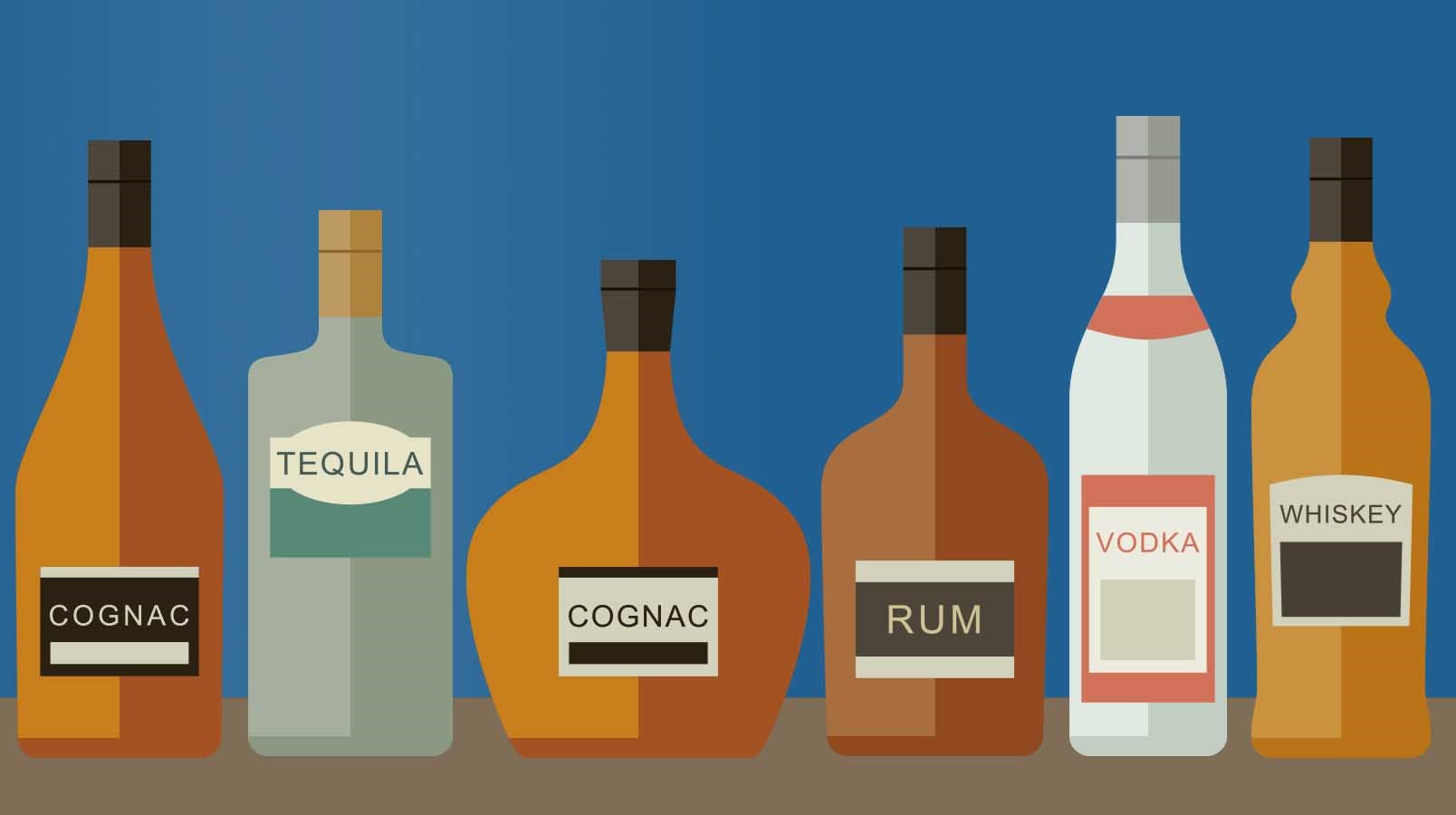We don’t all have space in our drinks cupboards to house a vast collection of spirits. Most people, and an increasing number of bars, are looking for a capsule collection of spirits that will allow them to prepare a wide array of drinks for their guests.
I’ve had a crack at picking the five staples for any home bar. Apologies to those who haven’t made the list – it’s nothing personal.
1. A high-quality vodka or gin
These two spirits are very versatile. Vodka is one of the biggest spirits categories in the world, as it can mix with almost anything (Vodka & Coke is another story). I hardly need to tell anybody about the global boom in gin sales over the last decade or so. Both can be served very simply; in a long glass with lots of ice, a slice and a good quality tonic - the quintessential "sundowner".
When properly made and chilled, Martinis are a thing of exquisite beauty. If you’re prepared to drink it ‘bone dry’, all you need is vodka or gin and plenty of ice. If not, a splash of vermouth (more on that later), a few stirs of the mixing spoon and you’re in for a cold, crisp, boozy treat.
2. A high-quality "white" or aged rum
Rum is an exciting and incredibly diverse spirit. Made around the world in a variety of styles, no spirits cupboard is complete without at least one rum (I suggest you try several). Try a dry, lighter style of white rum from Cuba or Puerto Rico, a bold, fruitier style from Jamaica or Martinique, an aged rum, or a blend from various Caribbean nations. Mix it with lime and a touch of sugar and thank me later!
While Rum is the base for so many classic cocktails - Daiquiri, Mojito, Mai Tai, Caribbean punch - the best rums aren’t just mixers. Pick well and you have a quality sipper to enjoy like a well-aged whisky or brandy.

3. A high-quality whisk(e)y
Any spirit collection, however small, must include something for sipping. I often reach for one of my favourite whiskies at the end of the day. All whiskies share two common denominators - grain and wood. The type of grain(s) used as a raw material and the type of wood in which the spirit is matured are two major factors influencing style and flavour. Look for something well-aged, at least 14 years from Scotland, Ireland, or Japan and 8 if from the USA. This allows for greater oxidation of the aromatic compounds inside the cask, increasing the richness and depth of flavour, offering the drinker a more interesting and memorable experience.
Your whisky selection should also provide a base for simple mixed drinks. A whisk(e)y highball (whisk(e)y & soda) is an easy-to-make thing of beauty. Something made with peated or wood-smoked malt with a floral, fragrant smokiness can really benefit from being served long with very fizzy soda (especially on a hot summers day!). And, with a few simple extras from your cupboard or pantry (see sugar, bitters and vermouth), you can transform whisky into a classic Old-Fashioned, Manhattan or Boulevardier.
4. Bitters
While not technically a spirit, although based on one, a bitter liqueur is a vital ingredient in many cocktails such as a Negroni, a Boulevardier, an Americano and a Hanky Panky. There are many different types to choose from - flavoured and ‘bittered’ with components such as bitter orange, gentian root and wormwood. Often Italian in origin and known as Amari (Italian for bitter), these liqueurs are traditionally drunk as an aperitif (before a meal) or as a digestif (after a meal). The herbs, roots and spices which flavour them aid digestion. Visit any part of Italy today and you’ll find the meal is closed with an alcoholic spirit or liqueur - be that Limoncello or Mirto. Keeping a bitter liqueur in your cupboard brings the European holiday dining experience home!
5. Vermouth or aromatised wine
While Vermouth is based on wine, so technically not a spirit, it is fortified with distilled alcohol and is a vital ingredient for many classic cocktails - Negronis, Manhattans, Clover Club and Martinis.
But if limited to one, which to choose? Red or White? Sweet or Dry? Your Martini could be ‘bone dry’ without white, dry vermouth (just keep your vodka or gin in the freezer), but as Dry Manhattans are the devil’s work, I suggest opting for a sweet red vermouth from France or Italy. Typically, and somewhat surprisingly these ruby-coloured liquids are actually made from fairly non-descript white grapes making a fairly plain white wine. The colour and flavour are added through macerations, distillates, and caramel colouring. To be labelled vermouth, one of these flavourings must be wormwood. This provides a floral, almost hoppy aroma and a distinct, drying bitterness on the palate which is offset by sugar and the maceration of sweeter spices like liquorice and cinnamon. It’s also common to find other herbs like rosemary, thyme and savoury.
The complex flavours in vermouth lend great depth to cocktails, but also stand up well in simple long drinks, mixed with soda or tonic, for a lower ABV alternative to Vodka or Gin. Simply build and garnish in the same way!
So there you have five staples for every spirits cupboard. However, unless it’s a very small cupboard, hopefully, you’ll have room to experiment with different rums and expand your whisk(e)y collection with styles and examples from many nations. The story of spirits is encyclopaedic, so keep turning the pages.
Prepared for WSET by Liam Scandrett, Business Development Manager - Spirits (UK)
If you're keen to start learning more about spirits, our qualifications will help you to look beyond the brand. Available in a classroom or online, find a course provider here.
Related content:


